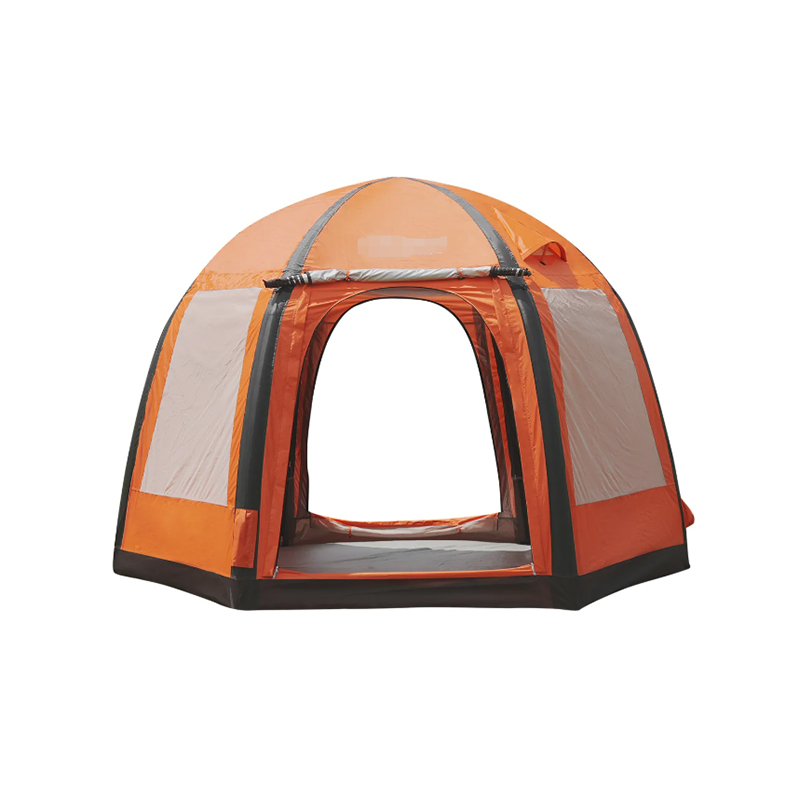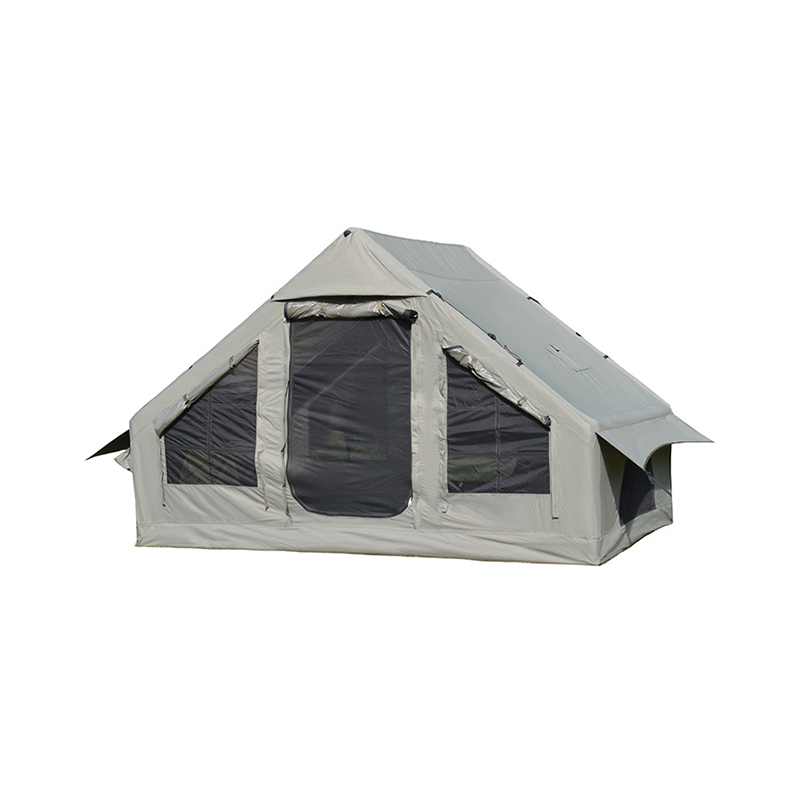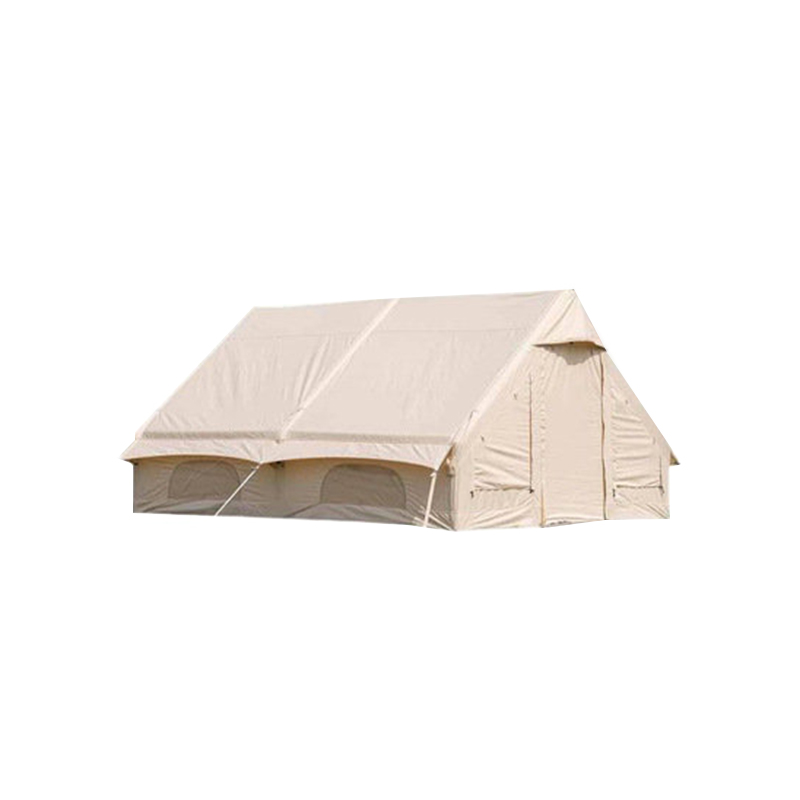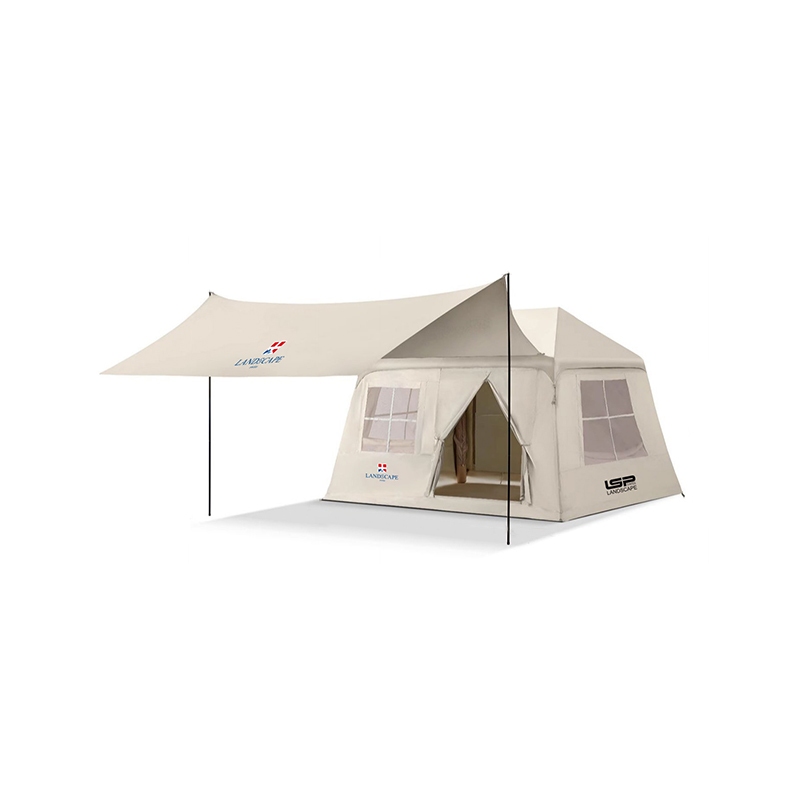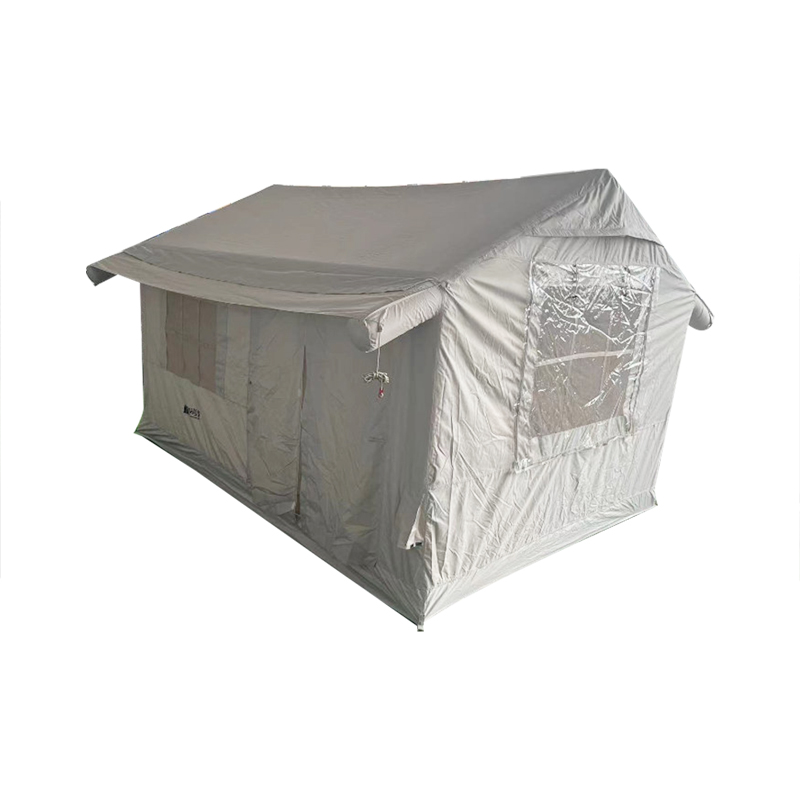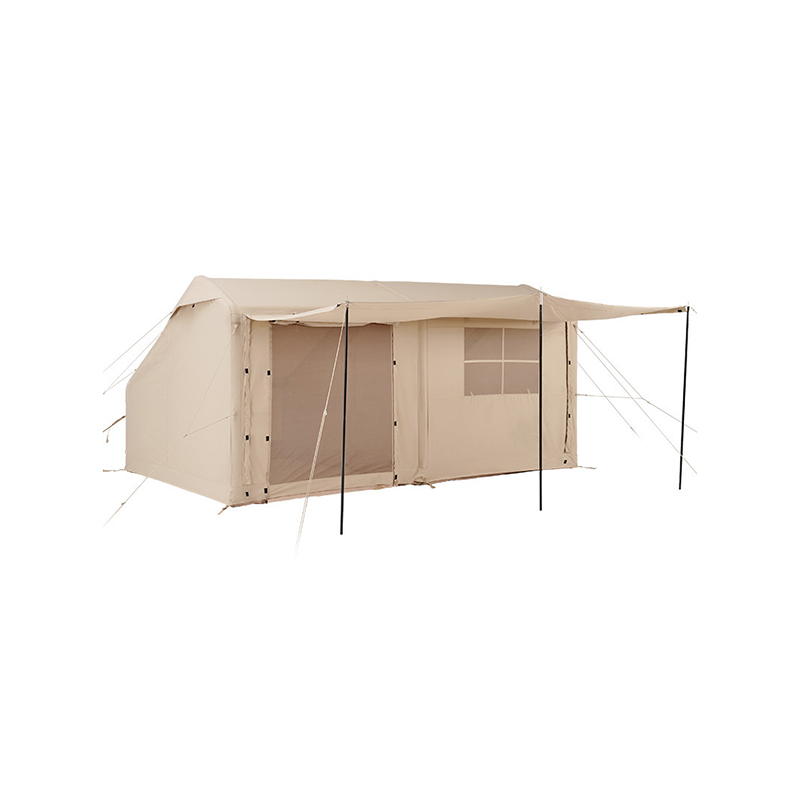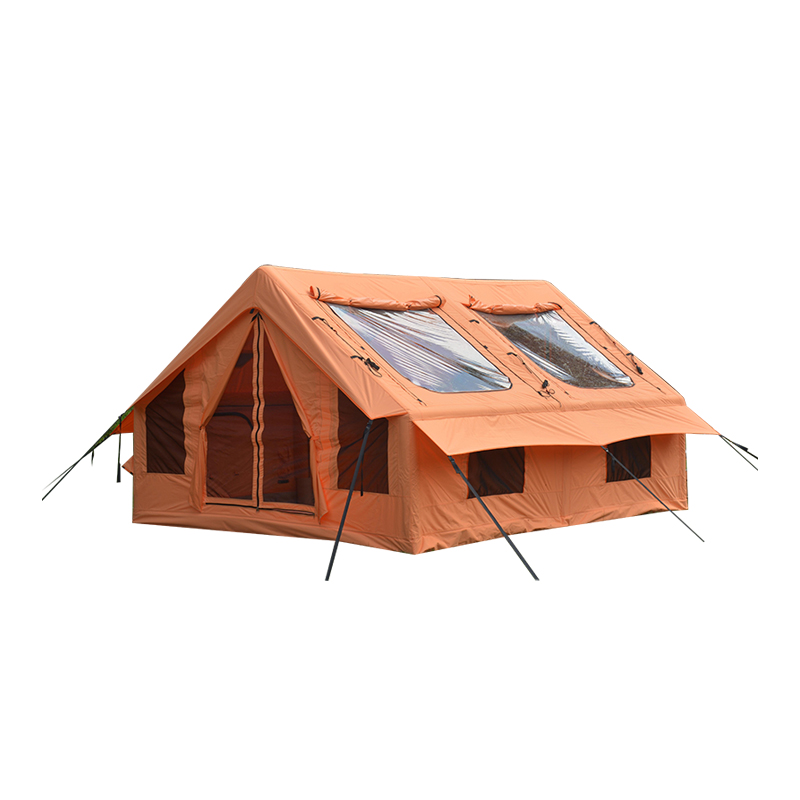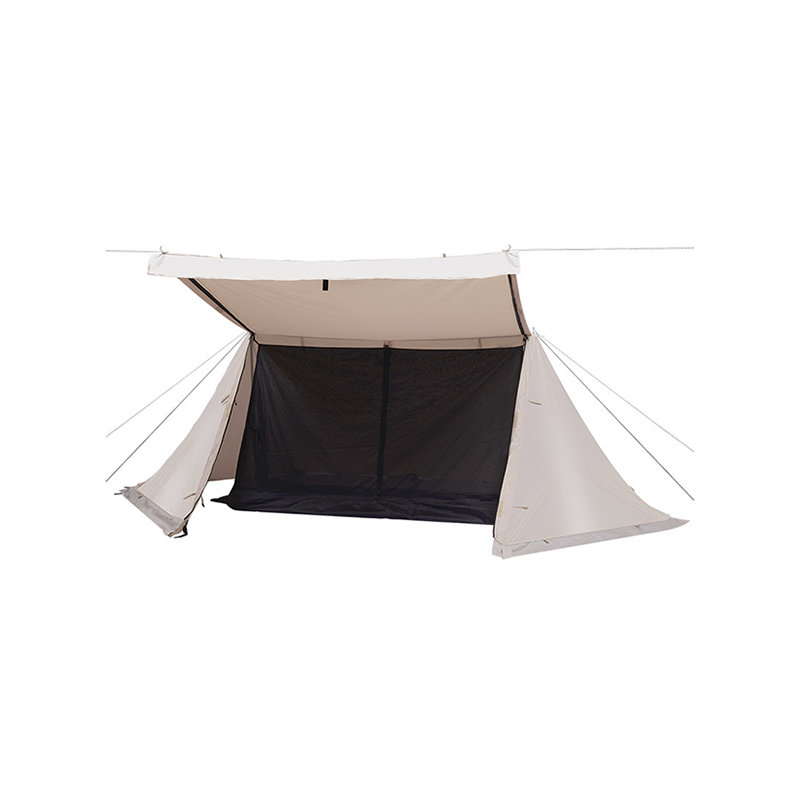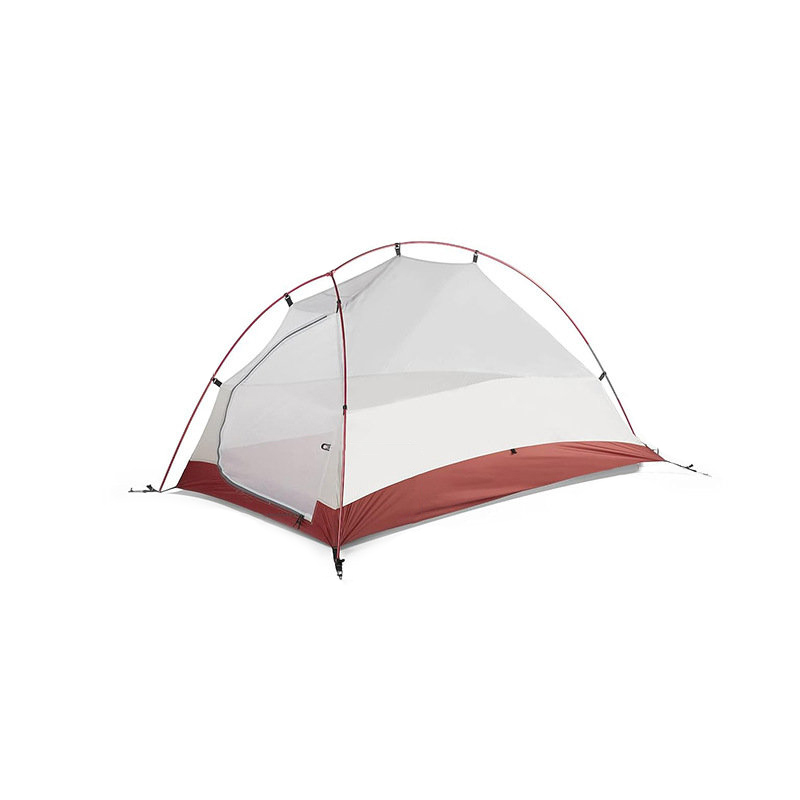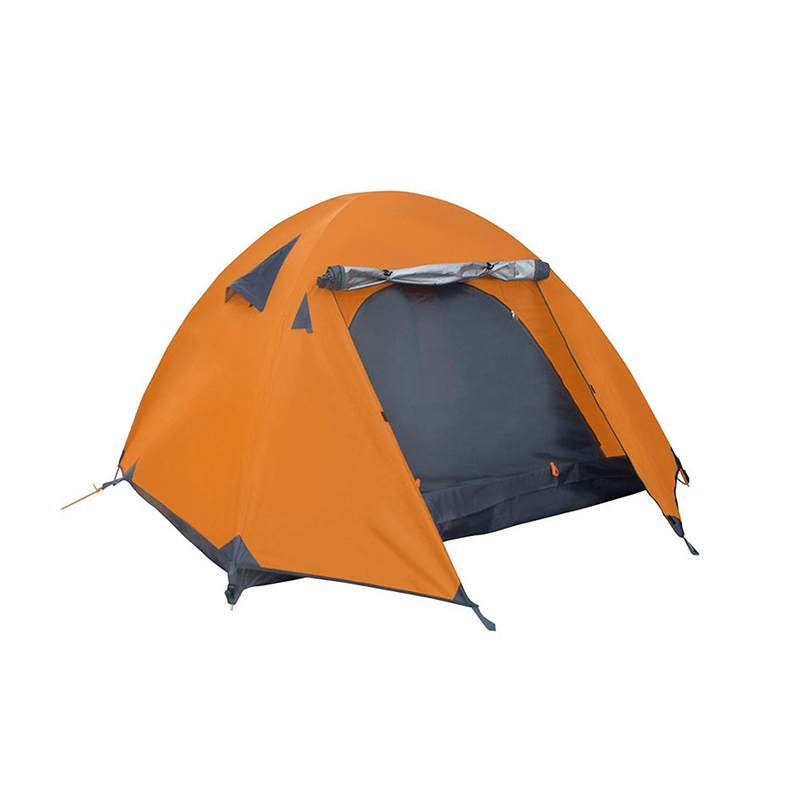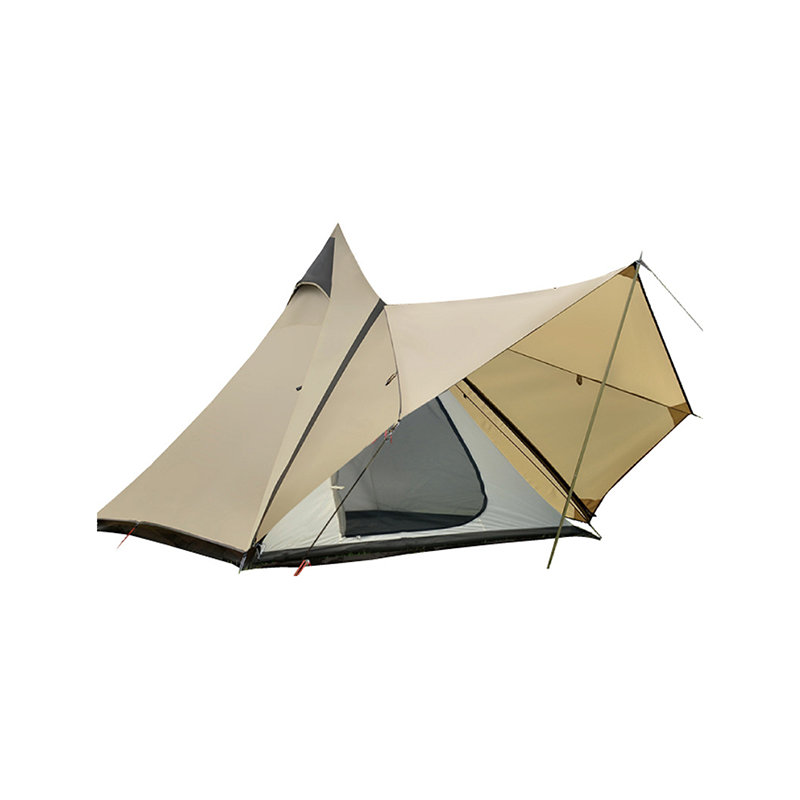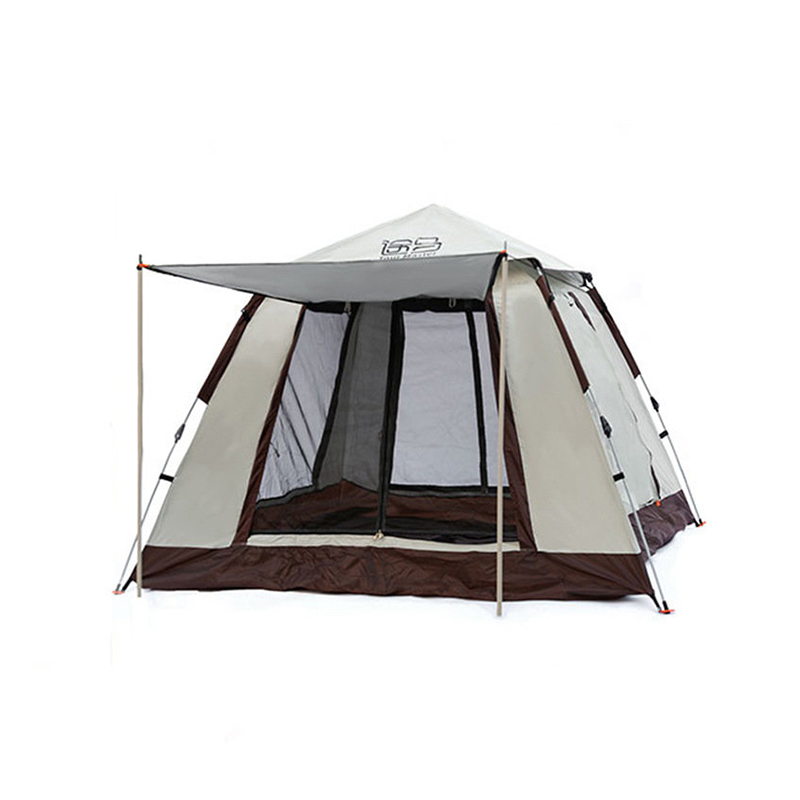Sloped or Angled Roof Design
The 6-Flat Air Tent incorporates a sloped or angled roof design, a critical element for preventing water accumulation. The primary function of the slope is to direct rainwater away from the tent’s interior, ensuring that water flows off the roof and does not collect in puddles, which could compromise the tent’s structure or seep inside.
-
Strategic Rainwater Displacement: The angled roof naturally guides water down to the sides of the tent, where it can be channeled away. This is particularly important during continuous rainfall, as it prevents the fabric from being weighed down by standing water. Without this feature, tents with flat roofs or poor drainage systems risk allowing water to pool on top, potentially leading to leaks and premature wear on the fabric.
-
Optimizing Roof Slope: In many 6-Flat Air Tents, the roof is engineered with an optimal slope, striking a balance between maximizing water runoff and maintaining usable interior space. This ensures that the design does not cause a cramped interior, while still keeping the tent functional and waterproof during inclement weather.
Raised Floor with Waterproof Coating
To prevent water from seeping into the tent from the ground, the 6-Flat Air Tent features a raised floor design, which is typically constructed from durable, waterproof materials. This floor prevents rainwater from entering the tent, especially in areas where the ground becomes saturated.
-
Bathtub Floor Design: Many models of the 6-Flat Air Tent incorporate a bathtub-style floor, where the floor extends up the sides of the tent to create a barrier. This design minimizes the risk of water flowing into the tent from the edges. The raised edges act as a dam, preventing groundwater, mud, or rainfall from infiltrating the interior.
-
Waterproof Floor Material: The floor is made from materials such as polyethylene or PVC-coated nylon, which are highly resistant to water penetration. These materials ensure that even in the wettest conditions, the interior of the tent remains dry, providing a high level of comfort for campers and preserving the structural integrity of the shelter.
Well-Designed Tent Vents and Windows
Good ventilation is crucial for managing moisture buildup inside a tent, as condensation from warm breath or wet gear can contribute to an uncomfortable environment. The 6-Flat Air Tent is designed with multiple ventilation windows and roof vents to help control internal moisture and regulate temperature.
-
Condensation Prevention: The vents are placed at strategic locations to allow for continuous airflow. Vents located near the peak of the tent are particularly effective at letting warm, moist air rise and escape, while cooler, drier air enters through lower openings. This process helps to prevent condensation from forming on the walls and ceiling, a common issue in tents without proper ventilation.
-
Rainproof Vents: Even though the 6-Flat Air Tent is built to offer superior ventilation, it does not compromise on rain protection. The tent's ventilation system often includes waterproof covers or mesh flaps that keep rain out while still allowing airflow. These rainproof vents are especially important when the tent is pitched in wet or rainy conditions, as they ensure that the interior remains dry and breathable without allowing water to enter.
Performance in Extreme Temperatures
The 6-Flat Air Tent is engineered to perform well under both hot and cold conditions, maintaining comfort and dryness during extreme weather. This adaptability is essential for campers who use the tent in various climates and seasons.
-
Cold Weather Performance: In colder climates, the 6-Flat Air Tent’s materials and design help keep the interior warm while also preventing internal condensation. The waterproof floor, rainfly, and airtight seals ensure that no moisture enters the tent, even when the temperature drops and the ground becomes frozen or damp.
-
Hot Weather Performance: During hot weather, the ventilation features of the 6-Flat Air Tent come into play, helping to regulate internal temperature and prevent heat buildup inside the tent. Proper airflow not only reduces the risk of condensation but also maintains a cooler, more comfortable environment inside.
Rainfly with Proper Coverage
The rainfly is an essential feature in any tent, and the 6-Flat Air Tent is designed with an extended and well-fitted rainfly that provides maximum protection against rain and moisture. The rainfly helps ensure that rainwater does not come into contact with the tent’s main structure, keeping the interior dry.
-
Drip Edge and Overhang: The rainfly is designed to extend well beyond the edges of the tent to create a drip edge, which helps direct rainwater away from the tent. This design ensures that water flows down the sides of the rainfly and does not drip into the tent at the seams or corners, where the risk of water infiltration is higher.
-
Comprehensive Coverage: The rainfly covers the tent’s entire structure, including the base and walls, ensuring that every part of the tent is protected. Its overlap with the tent’s roof and walls provides a layer of protection against driving rain, ensuring that water does not run off the rainfly and pool on the floor or sides of the tent.
Guttered or Channelized Tent Walls
The 6-Flat Air Tent often incorporates a guttered or channelized wall design, a sophisticated feature that actively channels water away from the interior of the tent. This design element provides extra protection against water infiltration, especially when the tent is exposed to prolonged rainfall or heavy water runoff.
-
Water Deflection Mechanism: The tent’s walls are designed with slightly raised channels or gutter-like sections that direct water flow away from the edges and down the sides. This ensures that even during heavy rain, water will not run directly into the tent, reducing the risk of internal flooding.
-
Preventing Water Pooling: The channels help manage the direction of water, guiding it to the ground and preventing it from pooling at the base or on the tent’s fabric. This design keeps the interior dry and significantly reduces the risk of water damage over time.



 English
English 中文简体
中文简体